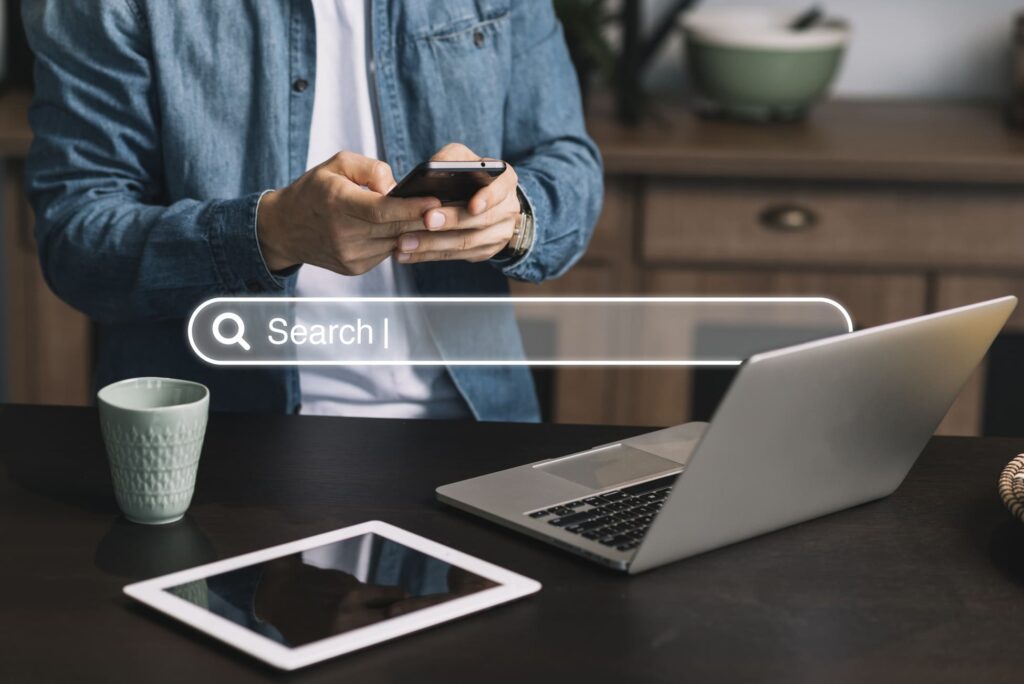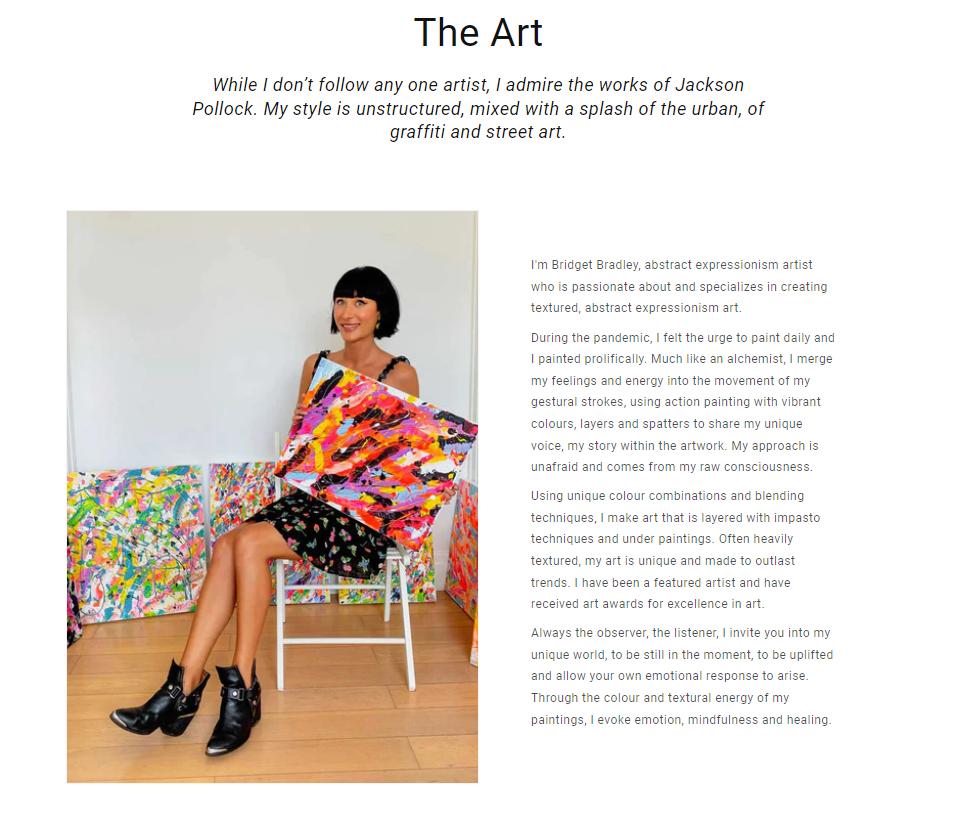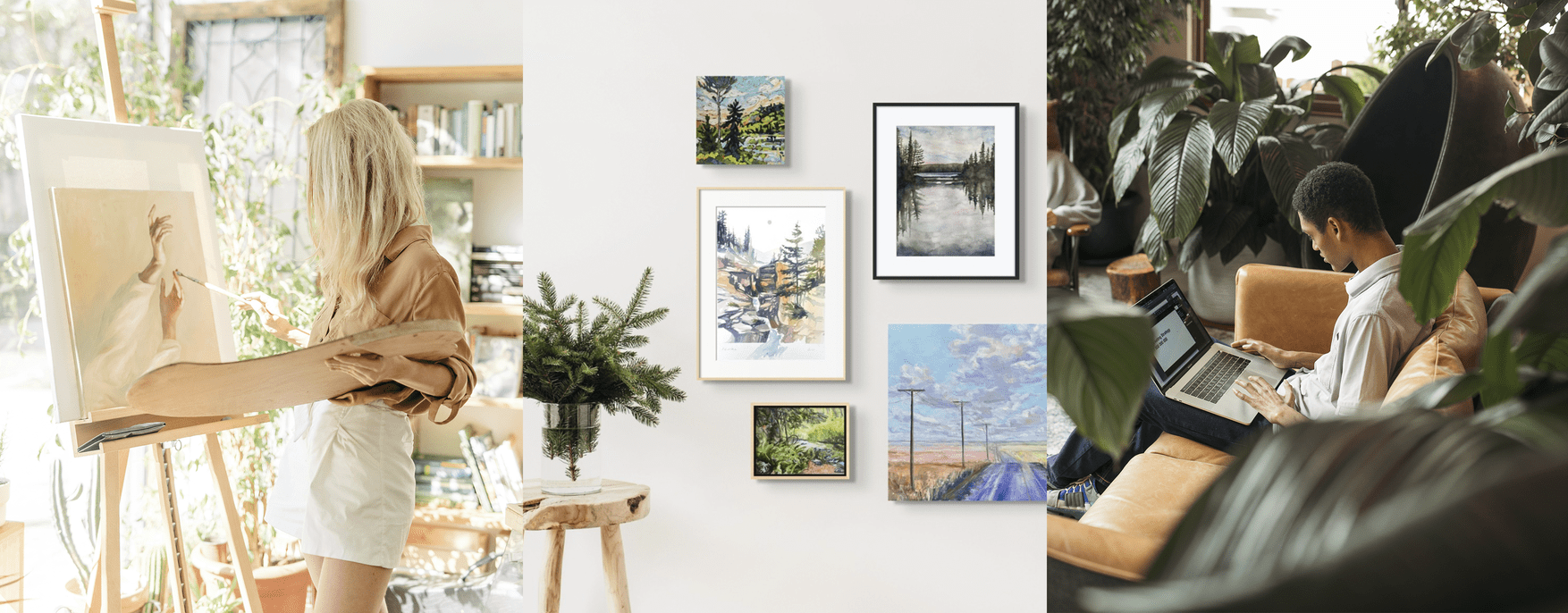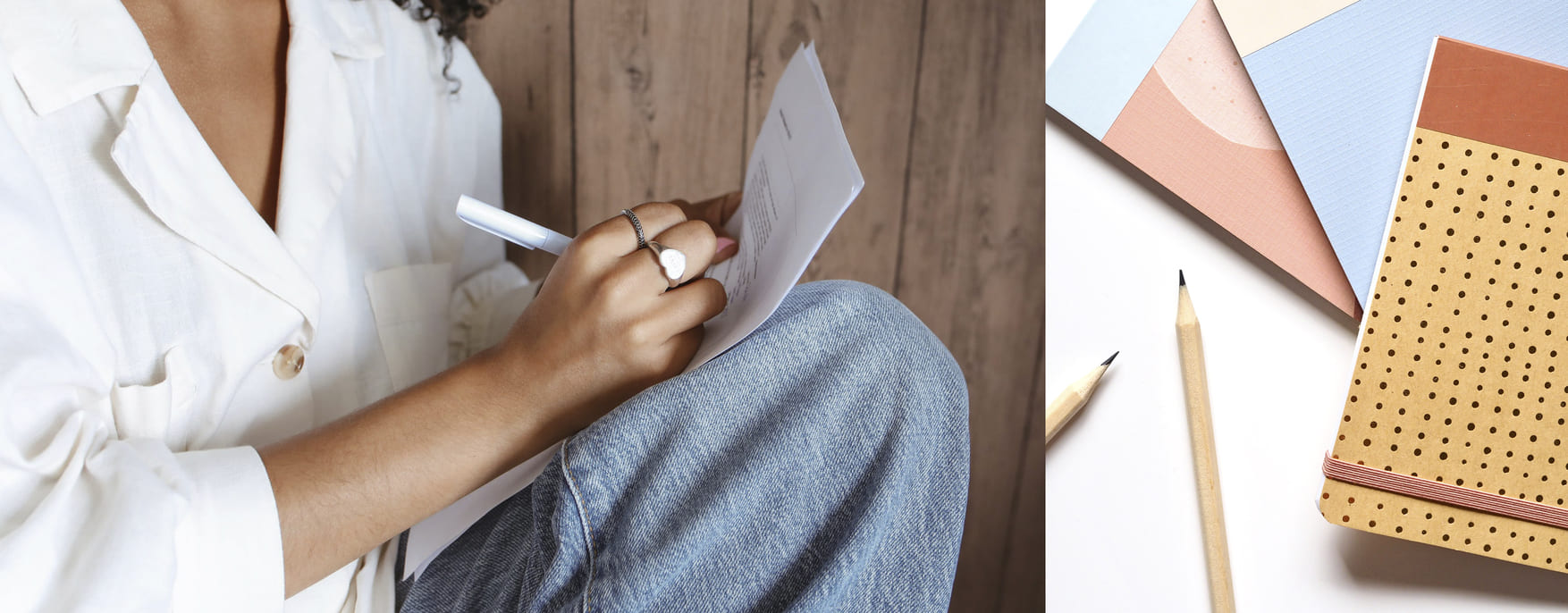Picture this: you have created an amazing website for your art or art business, everything is up to date but you still struggle with generating a considerable amount of traffic to your page. The answer and the solution to your problems is SEO or search engine optimization.
If you are not familiar with this terminology, think of SEO as writing or generating content with a strategy in mind that will make everything you have created and published on your website easier to find by search engines such as Google and the potential art collectors or buyers doing the research.
Follow this comprehensive guide to master the basics of SEO writing for artist and art business websites.

Contents
What is SEO and how can artists and art businesses benefit from it
If you are not familiar with this digital marketing term, the first thing you need to know is that SEO stands for Search Engine Optimization. In its simplest explanation, it consists of creating text with a carefully curated selection of keywords that will make it easier to find by search tools like Google, Yahoo, or Bing.
SEO is both the technique and the practice of consciously writing texts and website content that clearly communicates what you do as an artist or art business and, at the same time, it brings a content structure that increases the page’s visibility exponentially expanding your reach organically.
Having an SEO strategy can help you get your art noticed online, increase your audience and your interactions with it, establish your authority as a trustworthy source of creative content, and even increase your sales because your artworks will be at the top of search engines result pages or SERPs capturing potential collectors or art buyers’ attention.
A good SEO strategy goes beyond “art speak”, or the use of specific terminology to describe your creations or creative process. SEO requires you to manage or polish your writing skills and hit certain goals with your text to achieve art marketing goals like creating an engaging visitor experience by making the relevant content on your page more easier to access.

SEO-related terms every artist should know to build their strategy
Whether this is your first time creating an SEO strategy to drive more traffic to your professional art website or you are updating your past strategy to achieve your end-of-the-year art sales goals, this quick review of related terminology will help you understand the basis of SEO:
-Anchor text: is a text or phrase that is highlighted and linked to a particular page inside your own website (interlinking) or to another external site. The phrase and the linked page should match, for example, the words “Crypto art” should be linked to a page or blog post about the subject.
-HTML Tag: these are elements like headings, images, and paragraphs used to organize content inside a page and highlight its order to both readers and search engines.
-Heading: these are a main type of HTML Tags used to improve readability and highlight the content hierarchy. For example, the main title of a blog article is an H1, subtitles will be an H2. Headings rank in importance from H1 to H6.
-Indexing: when it comes to search engines, indexing is the process of recognizing, adding, and categorizing a webpage to its database. Search engine “crawlers” are usually scanning the web for new pages, when they find a new one under the right keyword they collect it to show it on future searches.
-Link: this is a clickable element inside a text that leads you to another related web page. Inside SEO there are certain types of links you should know like backlinks or links from external websites that lead to yours, outback links or links from your page that lead to other websites, and internal links or links that lead to pages on your own website.
-Interlinking: is the practice of creating a net of links connecting content and pages inside the same website to highlight relevant content and increase your SEO rankings. Interlinking tells the search engine that there is a web of substantial content about this subject, and the page is a reliable source.
-Keyword: this is a word or series of words that people enter on search engines to find something. A keyword concerning an artist’s work might involve things like its subject, themes, and even location, for example, “Cape Cod landscape photography”.
-Meta description: this is a brief summary of the contents of a webpage and it’s also the text you see on a result page after a search. It works as a preview of the content, usually highlighting its more important keywords and including a call to action or a set of words that entice the user to click on this particular link for more information.
-Meta titles: also known as Title Tags, these are the main title or H1 heading of a webpage and are showcased on search engine result pages as the main anchor text to click on to see the full page of content.
-Ranking: this is the position in which a webpage appears on a result page according to the selection made by a search engine. A higher ranking factor or appearing at the top of the list means the content of the page (keyword density, headings, etc) fits the criteria of the search done by a user.
-SERPs: these are Search Engine Result Pages or the result page filled with links to webpages you see after entering a “query” or a certain set of keywords looking for an specific content on a search engine.
-Traffic: this refers to the number of visitors your website receives during a certain time frame. Generally speaking, one of the main goals of a good SEO strategy is to increase organic traffic (without online advertising) from people who have engaged in an art marketing journey and will follow a desired action like making an artwork purchase.

How to create an SEO strategy for an art or art business website
If this is your first time creating a SEO strategy for your art or art business website, or you want to update the one you currently have, here you will find a step-by-step guide on how to draft a campaign focused on “on-page” actions or content you can upgrade inside your own web page.
To create your own SEO strategy follow these steps:
-Research keywords: select a list of 5 to 10 keywords mixing both specific and broad terms and phrases (long-tail keywords) related to you and your body of work. Think about the words potential collectors use to find artworks similar to yours, they are usually related to the art genre, medium, technique, and even specific location and subjects.
-Review your website content structure: make a list of the main pages of your website and what they communicate, as well as other important pages like artwork or art ecommerce product descriptions, and review them to make sure they have good readability and offer a great navigation experience to the visitor
-Optimize the pages on your website: give each page a set of keywords you want to showcase and update both the meta description, the meta titles, and the headings with them.
-Edit your images for SEO: use a short descriptive text as a file name for all images on your website. Instead of “banner1.jpg” go for “artist showcasing colorful abstract artwork.jpg” and make it possible for search engines to “read” and find your content making it easier to find for potential art buyers.
-Create cornerstone, evergreen content: these are the main pages or blog posts your website is built upon when we look at it from a content perspective. These contents might be updated in time but are usually timeless and help you establish your page as a reliable source around your selected keywords.
-Improve the interlinking: review each page’s content and make sure to create connections between the most relevant content on your website through the use of links. This will not only improve your ranking factor but will offer a better user experience to visitors who will easily find the content they are looking for.
-Build a net of backlinks: network and connect with other creators, as well, as digital media outlets to generate external content like articles and blog posts that link back to your website.
-Engage with your audience: a good social media strategy that helps you drive your followers to your webpage and motivate them to engage with the published content through actions like leaving comments or sharing it on their accounts.
-Take a deep dive into analytics: after your SEO strategy is running, you can lean on digital tools that will help you understand visitors’ behavior, your website’s overall ranking, and which pages are performing the best.
The goal behind checking your Google Analytics, for example, is to make upgrades and improve your content in time to make it more visible, reach a wider audience and make them follow a certain action like booking a commission.
-Connect with the process: SEO is both a long-term strategy and an ongoing process. Make sure to “go back to the drawing board” each month to review the performance of the page, and make improvements and iterations that will help you align yourself with your goals.
View Cory Huff’s exclusive ArtPlacer Academy recorded webinar, “How to optimize your artist website for sales”. Take the lesson by logging into your ArtPlacer account or starting your free trial.

SEO golden rules every art or art business should follow
Let’s get into detail! Here is a full list of easy-to-apply recommendations and best practices you should follow to create and execute a great SEO strategy for your art website:
-Meta titles should always include the main keyword of the content of the page and shouldn’t be longer than 60 characters.
-Meta description shouldn’t be longer than 160 characters and should always include a clear call to action for the visitors, as well as the main keyword.
-H1 is the main title of the page, entry, or blog post and should always include your main keyword. The rest of the content should be divided into sections with the use of H2 titles that include the main keyword or synonyms.
-Your main keyword should appear at the beginning of any descriptive text and then a number of times across the whole content. How many times should a keyword appear? A good number for keyword density is 1 to 2%: in a 1000-word article, there should be at least 10 mentions of the keyword.
-Link directly to keywords, related words, or synonyms, and always choose to open the link on another page.
-Any page or article, no matter the subject or theme should be structured to answer the 5 WHs of communication: who, what, when, why, and how.
-Always remember: create the type of text you would like to read. This is a good chance to improve your art writing skills.

How to write a meta description and title for an art website (fill in the blanks exercise + examples)
Now that you know the basics of SEO strategy and how to apply it in detail with best practices, it’s time to create your own optimized content with these examples and exercises.
How to write a meta description for an artwork page
If you are looking to increase your art sales, your SEO strategy should focus on making it easier for potential collectors and art buyers to find your creations.
With this “fill in the blank” exercise you can create a first draft of a meta description for an artwork page on your website’s art e-commerce section highlighting the keywords people use to find similar art to generate more traffic and provide visitors with a clear call to action to follow.
“Explore (artwork name) a (type of artwork) created with (medium) by (name of the artist). Featuring (theme or subject) in (style or genre). Discover more of their art on their online portfolio available for purchase”.
Meta title ideas and examples for an art website
Overall, the meta title on your website should highlight what you do and your work. From the home page to your “About me” page or an online art show, each one should have a descriptive introduction in its headline that makes it appealing to the reader and easy to find for search engines.
Here is a list of title ideas to spark your creativity, feel free to adapt and edit them to fit your website and your art marketing goals:
For your homepage: “Dive into the artistic world of John Doe – Landscape wildlife photography”
For your “About me” page”: “Unveiling the Artist: Get to Know Jane Doe”
For an artwork description page: “Sculpting Dreams – 3D figurative Art by Jane Doe”
For an art e-commerce section: “Buy unique art online – Shop John Doe’s latest collection”
For an online art show page: “Online art gallery – Discover “name of the collection” by Jane Doe”
For portfolio page: “Jane Doe’s Art Portfolio: A Visual Journey of Creativity”
Now it’s time to review and update your artist or art business website to reach your sales and creative goals.



